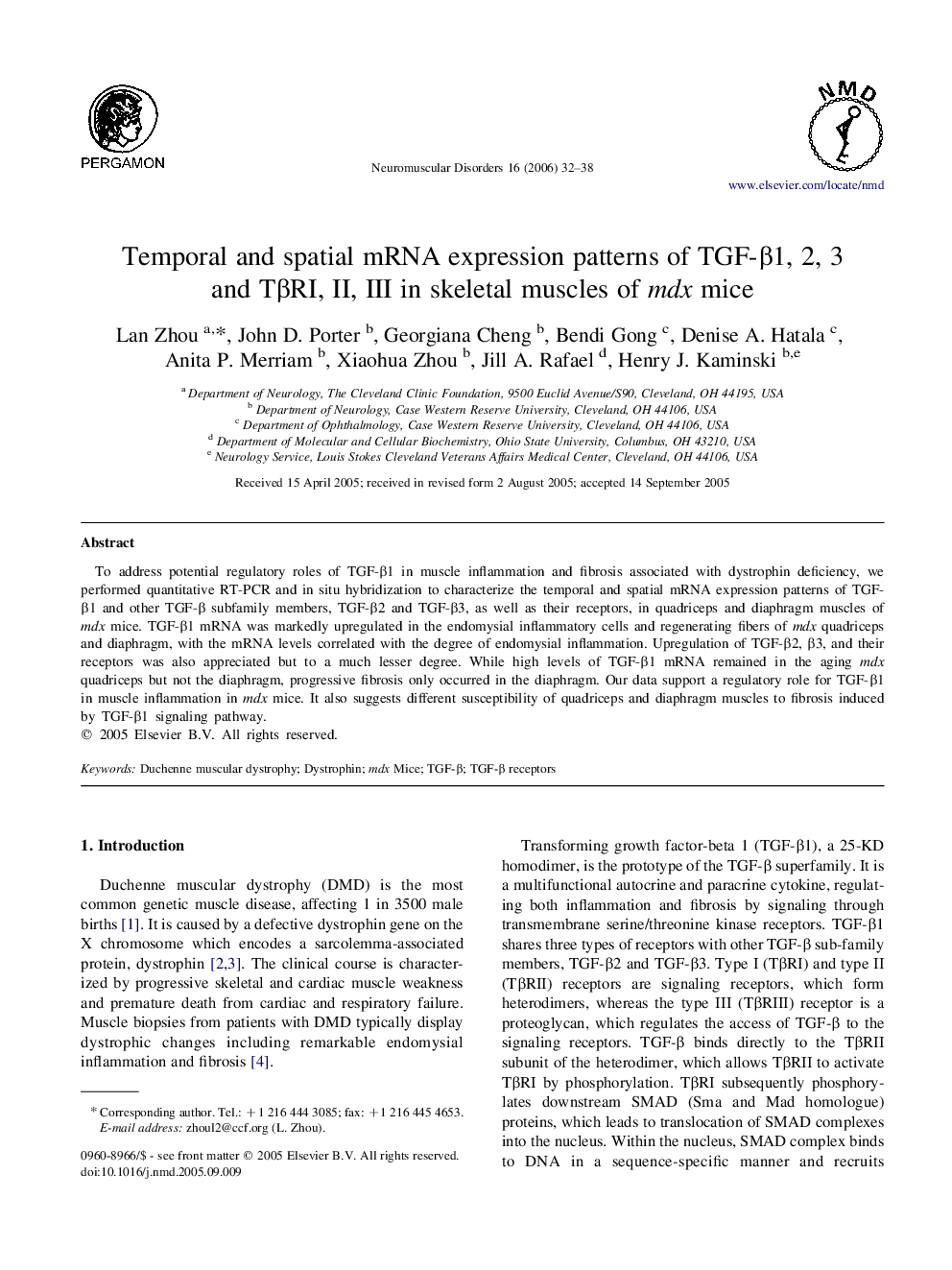| Article ID | Journal | Published Year | Pages | File Type |
|---|---|---|---|---|
| 3081639 | Neuromuscular Disorders | 2006 | 7 Pages |
To address potential regulatory roles of TGF-β1 in muscle inflammation and fibrosis associated with dystrophin deficiency, we performed quantitative RT-PCR and in situ hybridization to characterize the temporal and spatial mRNA expression patterns of TGF-β1 and other TGF-β subfamily members, TGF-β2 and TGF-β3, as well as their receptors, in quadriceps and diaphragm muscles of mdx mice. TGF-β1 mRNA was markedly upregulated in the endomysial inflammatory cells and regenerating fibers of mdx quadriceps and diaphragm, with the mRNA levels correlated with the degree of endomysial inflammation. Upregulation of TGF-β2, β3, and their receptors was also appreciated but to a much lesser degree. While high levels of TGF-β1 mRNA remained in the aging mdx quadriceps but not the diaphragm, progressive fibrosis only occurred in the diaphragm. Our data support a regulatory role for TGF-β1 in muscle inflammation in mdx mice. It also suggests different susceptibility of quadriceps and diaphragm muscles to fibrosis induced by TGF-β1 signaling pathway.
